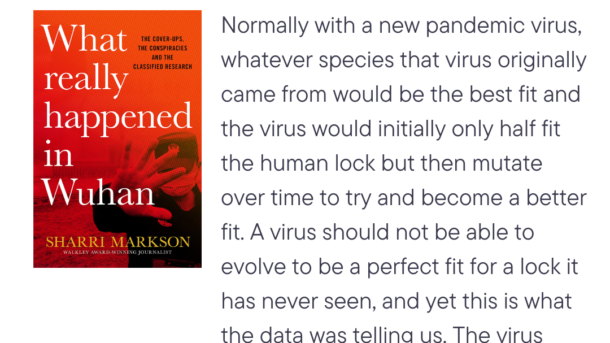Petrovsky and his team uploaded all the genetic sequences for ACE2 from potential animal hosts including bats, cats, dogs, pangolins, mice, civets, monkeys, hamsters, ferrets, horses, tigers, cattle and snakes, as well as humans, to the supercomputer. Petrovsky says it’s best to think of the ACE2 receptor as the lock in a door, and the spike protein as the key that opens the door. “We were trying to find which species of lock the Covid-19 key was best designed to unlock,” he said. Using the supercomputer, “you can try and fit the SARS-CoV-2 spike protein structure shape into all of the ACE2 structures from different animals to see which one fits best, just like solving a jigsaw,” Petrovsky explains. By March 2020, the supercomputer was operational and they were running simulations using the spike protein and ACE2 models. Very quickly, he had a result – and it was a result that caused him a great deal of angst. “Strangely, humans came out at the very top of the list.” Petrovsky pauses. “That was not what we were expecting, as the animal host from which the virus had been transmitted should have been at the top of the list. This presented a puzzle as the data suggested the SARS-CoV-2 spike protein had uniquely evolved to bind and infect cells expressing human ACE2. Normally with a new pandemic virus, whatever species that virus originally came from would be the best fit and the virus would initially only half fit the human lock but then mutate over time to try and become a better fit. A virus should not be able to evolve to be a perfect fit for a lock it has never seen, and yet this is what the data was telling us. The virus spike protein looked like it couldn’t have been better designed to fit the human ACE2. Go figure.” Petrovsky’s research partner at Melbourne’s La Trobe University, Professor David Winkler, was equally flummoxed when he later learnt the result. “We both expressed surprise that the human ACE2 came out on top,” he said. When Petrovsky thought more closely about this, he rapidly grasped the finding’s potential ramifications, as unpalatable as they might be. If the Covid-19 virus is perfectly adapted to humans, there was a possibility it had been worked on in some capacity in a laboratory to provide it with the opportunity to learn about and adapt to the human lock. Given the scientific consensus globally seemed to be that the virus had a natural origin, despite no evidence for this, sharing this contrary result that suggested the virus may be man-made could have major negative implications for his scientific career, never mind the fact that the result had been unequivocally generated from a supercomputer. A supercomputer cannot possibly have political leanings.
An interesting book that delves deep into the origins of Covid-19 and the in its early stages. Many anecdotes also show how politics gets in the way of science.



